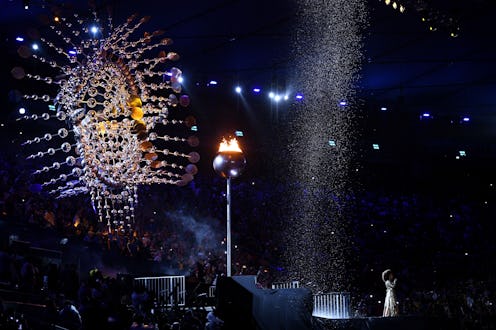News
The Olympic Flame Won't Be Relit For Some Time
The Closing Ceremony of the Rio Olympics was an incredible celebration of the last two weeks, which brought the world together to cheer on athletes and revel in athletic achievement. The games officially ended when the Olympic flame was extinguished at the Closing Ceremony, marking a lovely end to the Rio games. All in all, the Rio organizers did an amazing job of bringing about the symbolic closing of these impressive Olympics.
This year's ceremony made a memorable and beautiful moment out of the extinguishing of the flame. Brazilian singer Mariene de Castro performed a gorgeous and bittersweet song as rain poured down from above (manufactured rain, not the actual rain that filled Maracana Stadium). The flame was extinguished, symbolizing the end of the Olympics' reign in Rio, before the ceremony moved on to joyfully look forward to the next games in Tokyo.
The flame finally finished its long journey that began exactly four months before it was extinguished. On April 21st, the flame was lit in a reenactment of an ancient ceremony that symbolizes the link between the modern games and its ancient counterpart. The torch was lit by harnessing the sun's rays using a parabolic mirror, which the Ancient Greeks called a skaphia.
The flame, and the backup flames that accompanied it in case the original went out, then made its way to Switzerland to visit Lausanne, the home of the International Olympic Committee and the Olympic Museum. On May 3rd, the flame arrived in Brazil and began a three month journey across the country, visiting some of Brazil's most famous and most secluded sites. Finally, the Olympic cauldron was lit by Brazilian marathoner Vanderlei de Lima during the Opening Ceremony on Aug. 5, its final home until the end of the games.
The Rio Organizing Committee did decide to do something slightly different with the cauldron this year. Typically, the cauldron remains inside or near Maracana Stadium where the Opening Ceremony was held, but the organizers chose to make the symbol of the Olympics more accessible to the people of Rio. The cauldron was placed outside on the Olympic Boulevard, so that all the city's people could admire and take ownership of it. It was an empowering choice for the city of Rio, a symbol which even those who deeply opposed the games in the impoverished city should be able to appreciate.
The Olympic flame is one of the most potent symbols of all that the Olympics stands for, and even when the games don't live up to their potential, the flame is there to remind the world that there will be another opportunity in two years to do better. Although the Olympic flame has burned out for 2016, it will burn even stronger in Pyongchang in 2018 and Tokyo in 2020.
